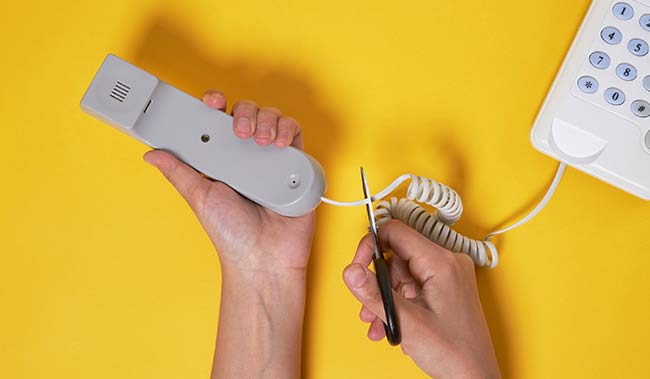28th March 2025

Are high call abandonment rates hurting your contact centre? If your contact centre is struggling with a rising call abandonment rate, you’re not alone.
Customers often hang up out of frustration when faced with long wait times, unclear processes, or poor communication. In this article, we’ll explore 10 proven strategies to reduce call abandonment rates
Call abandonment rate is a crucial metric in contact centres that reflects the percentage of inbound calls that are disconnected by the caller before they connect with an agent.
This typically happens when customers face long wait times, experience confusing IVR systems, or encounter unexpected delays. It’s important not to confuse call abandonment rate with missed calls, dropped calls, lost calls or short calls.
To calculate call abandonment rate you need to subtract the number of calls handled from the number of calls offered, then divide this number by the number of calls offered, before finally multiplying the result by 100 to get a percentage.
The formula for calculating Call Abandon Rate is:
Call Abandon Rate = ((Number of Calls Offered −Number of Calls Handled) ÷ Number of Calls Offered) × 100

Reducing your call abandonment rate requires a combination of smart strategies, efficient processes, and proactive solutions. That’s why we have put together 10 effective ways to improve your call abandonment rate.
The first step to improving your call abandonment rate is to accurately calculate it. By understanding your current rate, you can identify trends, set realistic improvement goals, and measure the impact of any changes you implement.
Regularly monitoring this metric will help you spot peak periods of high abandonment, identify patterns in caller behaviour, and pinpoint areas where your contact centre may need adjustments, such as staffing levels or call routing strategies.
Identifying customers while they are still in the call queue can significantly improve your ability to manage their experience and reduce abandonment rates.
By integrating your contact centre system with your CRM (Customer Relationship Management) platform or caller ID technology, you can gather valuable insights about the caller before they even speak to an agent.
This allows you to:
Reducing wait times is one of the most effective ways to lower your call abandonment rate. When customers are left waiting too long, frustration builds, and they’re more likely to hang up.
To improve your response time:
By improving response times, you create a smoother customer experience, reduce frustration, and encourage callers to stay on the line.
If you’re looking for more ways to improve your contact centre response time, read our article: How to Improve Contact Centre Response Time
Implementing an automatic callback feature is an effective way to improve customer experience and reduce call abandonment rates.
Instead of forcing customers to wait on hold, this system allows them to request a callback when an agent becomes available – maintaining their place in the queue without the frustration of waiting.
Effective scheduling is key to reducing call abandonment rates and ensuring your contact centre operates smoothly. By aligning your staffing levels with call volume patterns, you can minimize wait times.
To improve scheduling:
To work out how to calculate required staffing levels, read our article: How to Calculate Staffing in a Contact Centre
After-call work (ACW) refers to the tasks agents must complete once a customer interaction ends. These tasks may include logging call details, updating customer records, sending follow-up emails, or scheduling callbacks.
While necessary, excessive ACW can reduce agent availability and increase call wait times – ultimately impacting your abandonment rate.
To speed up after-call work:
If you’re looking for ways to reduce your after-call work, read our article: What Is After-Call Work (ACW) and How Can It Be Improved?
Keeping track of call duration is essential for balancing quality customer interactions with efficient call handling. While longer calls may sometimes be necessary for complex issues, excessive call times can reduce agent availability and contribute to higher abandonment rates.
To manage call duration effectively:
Boosting First Call Resolution (FCR) is one of the most effective ways to reduce call abandonment rates. When customers get their issues resolved during their first interaction, they’re less likely to need follow-up calls or experience frustration from prolonged support.
To improve First Contact Resolution:
For more ways to improve first contact resolution, read our article: Improve First Contact Resolution (FCR)
If your call abandonment rates are rising due to an increase in call volume, failure demand could be a major factor. Failure demand refers to calls that result from unresolved issues, unclear information, or preventable mistakes – meaning customers are calling because something went wrong.
To reduce failure demand, start by identifying the root causes. Are customers calling back because they didn’t get the right information the first time? Are unclear instructions or broken processes driving repeat enquiries? Resolving these underlying issues should be a top priority.
By improving communication, updating self-service resources, and addressing common pain points, you can reduce unnecessary calls, ease pressure on your agents, and ultimately lower your abandonment rates.
If your abandonment rates are climbing, investing in workforce management (WFM) software can make a big difference. WFM tools help you forecast call demand, schedule agents efficiently, and ensure you’re adequately staffed during peak periods.
By analysing historical data and real-time call trends, WFM software can predict busy periods and suggest optimal staffing levels. It also allows you to manage agent breaks, shift changes, and skill-based routing – ensuring the right agents are available when demand is highest.
This article is a revised version of What Is Call Abandonment Rate and 10 Proven Ways to Improve It, originally published by Scorebuddy.
For more on how to reduce call abandonment rate in your contact centre, read our articles:
Reviewed by: Jo Robinson